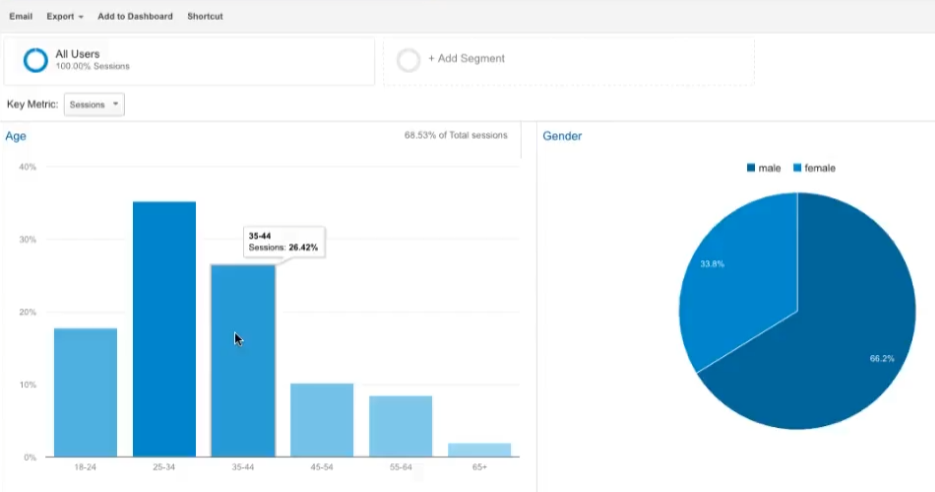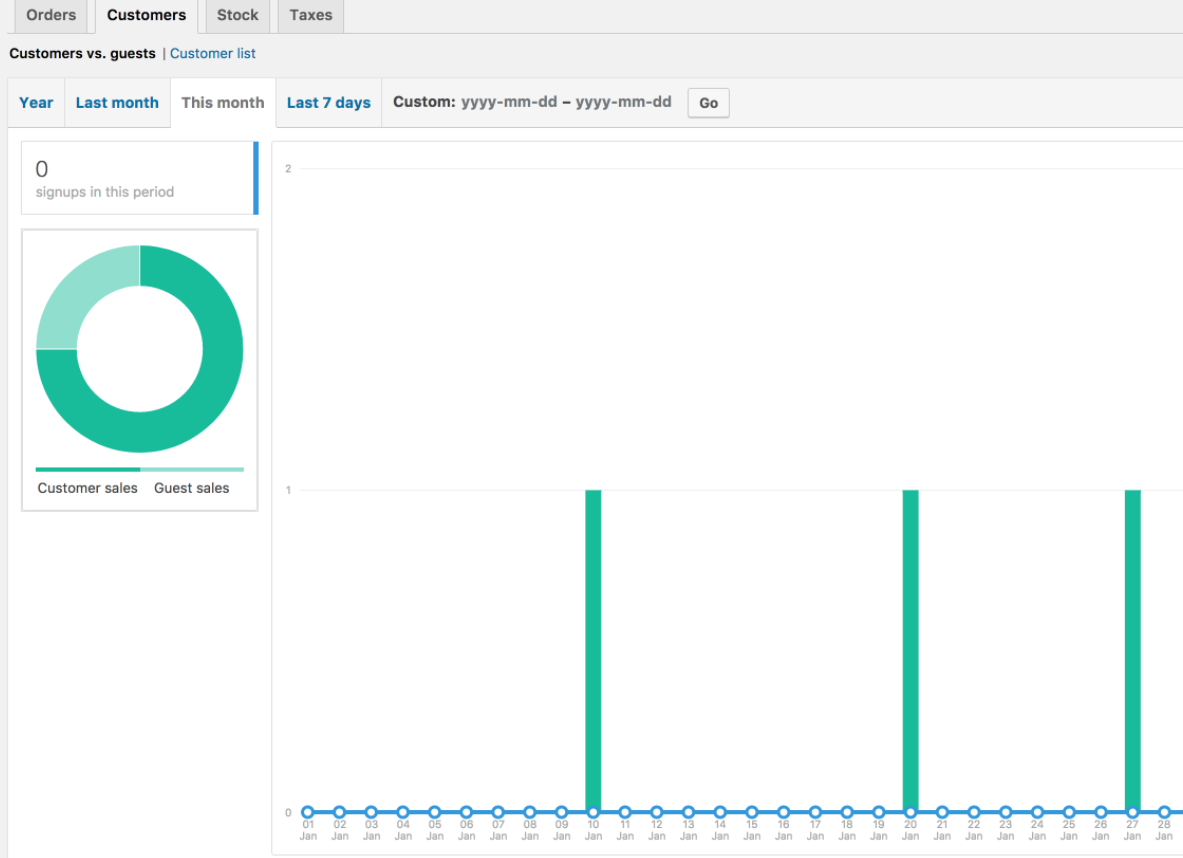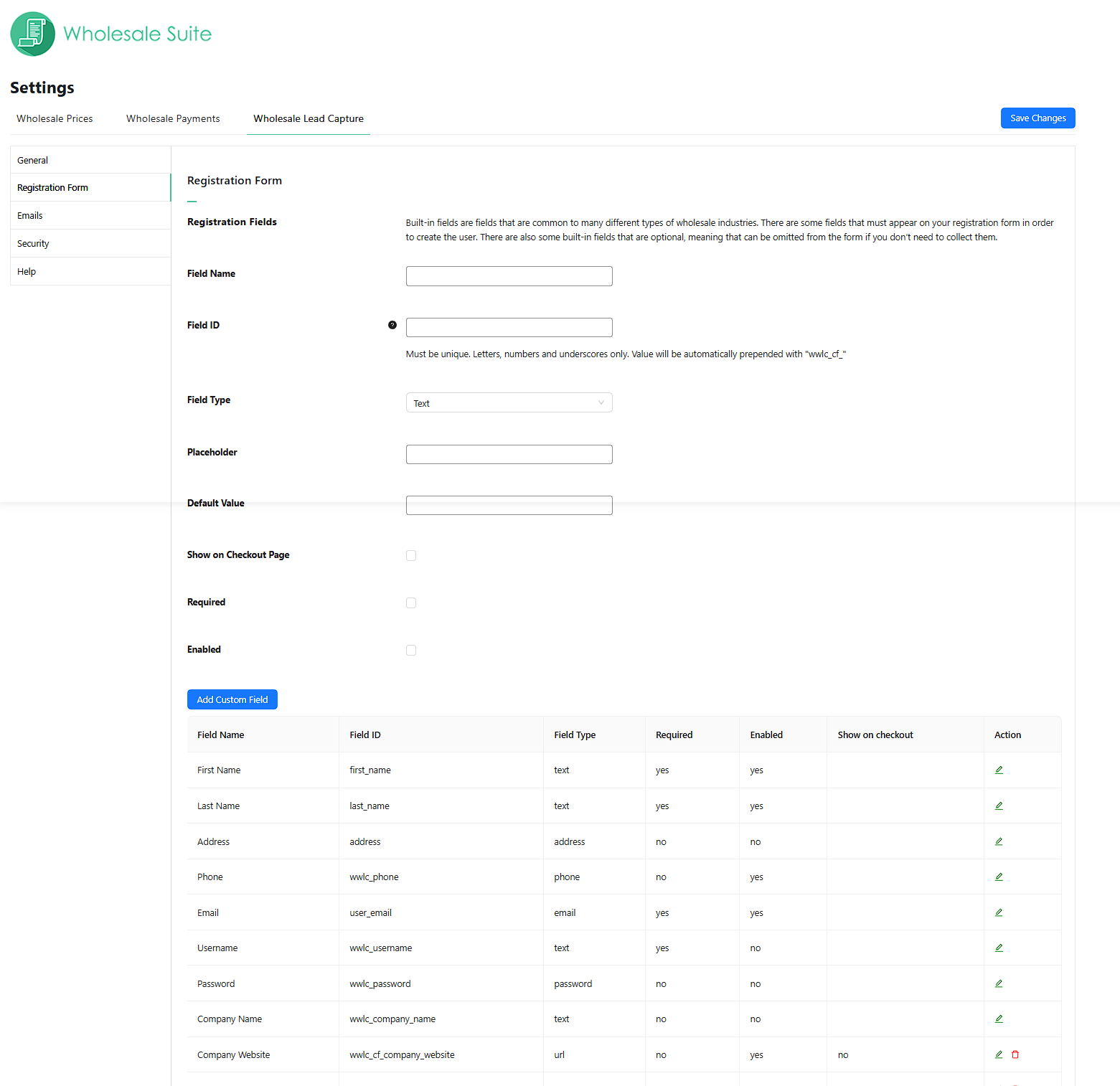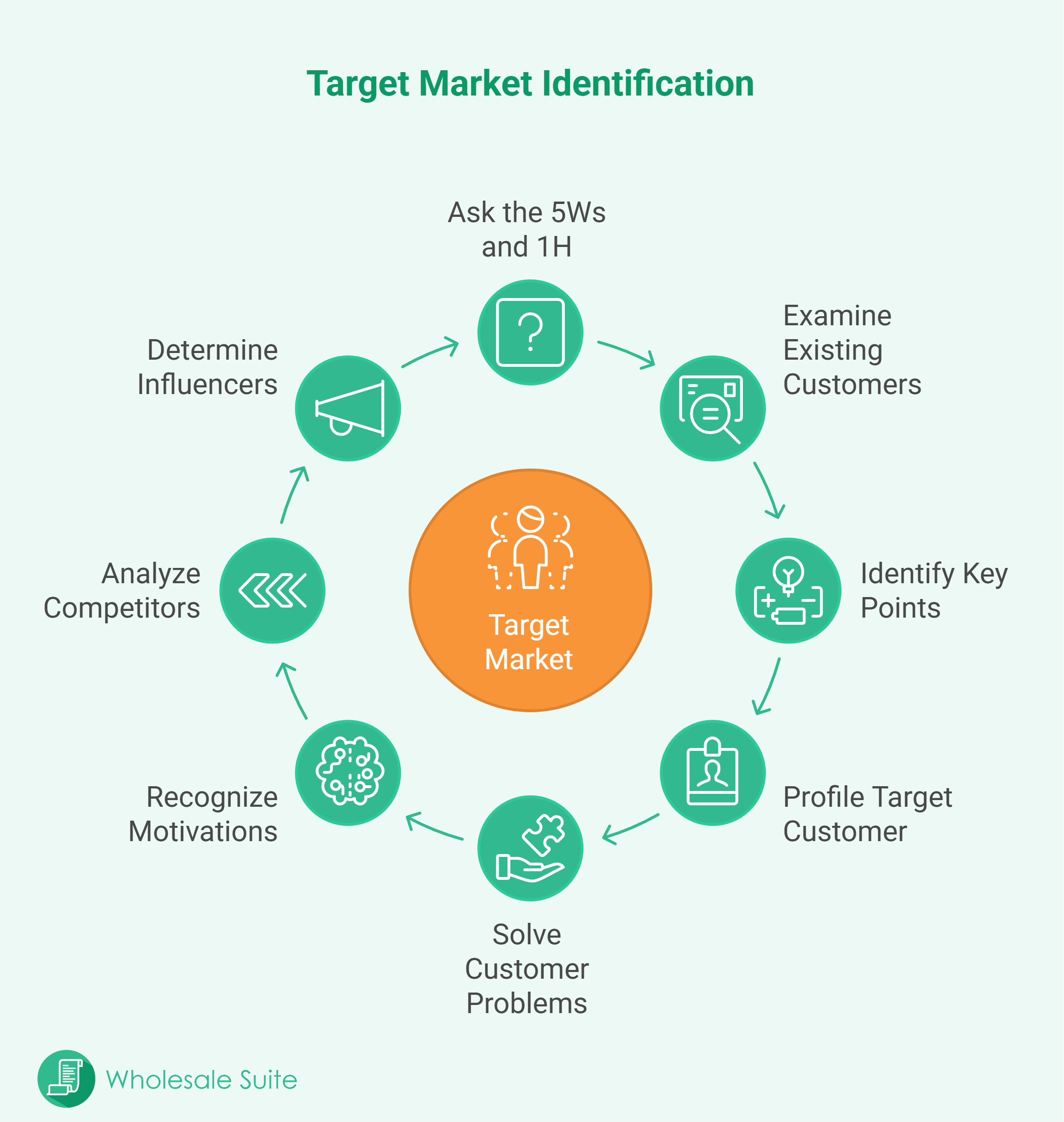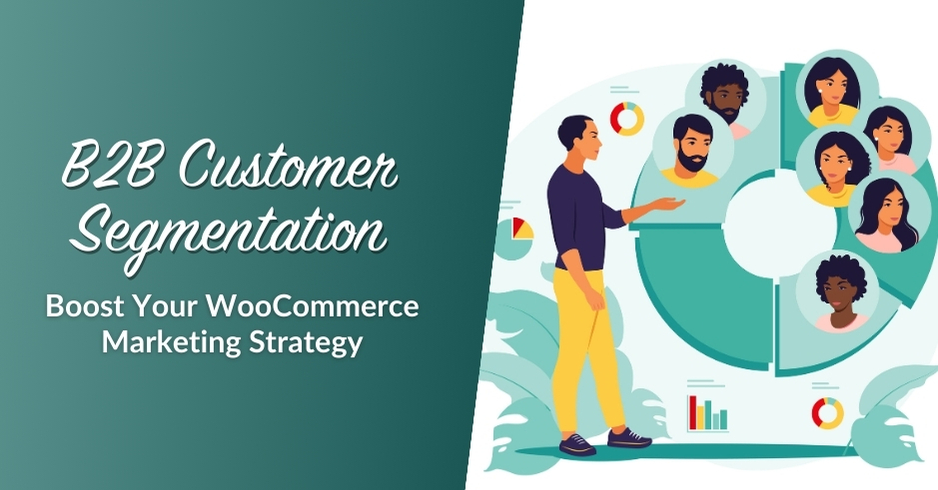Every store has an ideal customer. These are the buyers that keep coming back, have deep pockets, and never demand too much attention. If you plan on running a successful store, you need to have an idea of what your ideal b2b customer profile looks like.
The concept of a customer “profile” is simple. In practice, most customers always fit into some type of persona. Your b2b customer profile should reflect the type of client that benefits your store the most and causes the fewest issues.
In this article, we’ll explore the concept of customer personas and why creating a detailed b2b customer profile is critical. Then, we’ll walk through the characteristics that define your ideal business customer. We’ll even give you actionable tips to help you create one from scratch.
So let’s get to it!
What Are Customer Personas Or Profiles?
Understanding who your customers are is essential if you plan on running effective marketing campaigns. After all, the messaging that resonates with one group might fall flat with another. Without a clear b2b customer profile, you risk alienating your most valuable clients.
Customer profiles are models you create based on real customer data. With tools like Google Analytics, you can access information about your audience such as:
- Location
- Age group
- Interests
- Gender
- Buying behavior
In modern times, collecting all this data isn’t difficult. Free tools such as Google Analytics will give you access to staggering amounts of information concerning your website’s visitors:
WooCommerce also provides you with plenty of data about customer behavior and orders. When you combine that information with analytics from third-party resources, you get all the pieces that you need to assemble customer profiles:
💡Tip: If you’re using Wholesale Suite, integration with tools like Metorik makes it even easier to analyze your b2b customer profile and gain deeper insights into your buyers’ behavior.
What Makes For An Ideal Wholesale Customer Profile?
Naturally, you want your business to attract customers who order frequently, have a high order value, and are easy to deal with. But a real b2b customer profile should go deeper than that. Here are four key traits to look at when building one:
1. Geographic location
Shipping is one of the biggest logistical challenges. Since bulk orders are the norm in B2B, it’s essential to keep things efficient. A strong b2b customer profile will consider:
- Reducing shipping times and costs as much as possible
- Offering quality packaging
- Using shipping services that customers like
As the distance between you and your customers grows, so do the challenges associated with shipping. Ordering wholesale from halfway around the world can be a headache.
Local buyers often make the best fit. A b2b customer profile with too wide a geographic range may bring more problems than profits. Although how big that geographic range is will depend on shipping logistics and the types of products that you’re selling.
2. Demographics served
When you sell wholesale, it’s important to understand that the people who buy from you are usually not the end-users of your products. Your customers are distributors with their stores who buy from you to sell retail at a markup.
B2B buyers are usually resellers, not end-users. So your b2b customer profile must consider:
- What age are the people that use these products?
- What do customers use my products for and what pain points do they solve?
- Where are most end-users located and what is their gender?
- Is there a time during the year when people use these products more?
The answers to those questions will help you market products more effectively to your customers. A lot of distributors look for customer information when they buy products wholesale. That means they expect you to provide insight into how they can sell products and even retail pricing recommendations.
3. Store type
Not all B2B buyers operate the same way. Some have online stores, others sell via physical locations. Your b2b customer profile should capture:
- Buyer performance by store type
- Sales channels used
- Order size per channel
It can be hard to know what store type your customers run unless you use a custom wholesale user registration form. Wholesale Lead Capture lets you set up wholesale registration forms that include any fields you might need:
With this plugin, you can ask users what channels they plan on using to sell your products before you approve their registration. Afterward, you can simply keep tabs on which customers are making the biggest orders.
4. Buyer profile
Moving on from logistical considerations, an ideal customer profile needs to contain data about the users themselves. Your b2b customer profile should include:
- Preferences on shipping and communication
- Interests and decision-making behavior
- Role within the company (owner, buyer, assistant)
If store owners are the ones doing the actual purchases, that’ll be part of their customer profile. However, many stores have dedicated buyers whose job is to restock inventory. In such a case, your customer profile needs to note their position within the business.
8 Ways To Define Your Target Market
Once you understand what makes a strong b2b customer profile, you can use these 8 strategies to pinpoint your ideal customers:
1. Ask the 5Ws and 1H
Start with the basics:
- Who are your current and ideal customers?
- What are their interests and challenges?
- When do they buy and how often?
- Where do they shop?
- Why do they choose you?
- How do they make decisions?
These answers help fine-tune your b2b customer profile. You can ask many other questions to help you define your target market, but these are a good start.
2. Examine your existing customers
Analyzing past buyers is a goldmine for identifying what works. You’ll start seeing patterns that can shape a smarter b2b customer profile.
According to Bizfilings, you can define your target market by learning more about your current wholesale customer base. For example, your analysis can help identify the types of clients who purchase from you the most and the characteristics common among them.
Such information can allow you to segment these customers into groups so that you can reach out to them based on their behaviors or characteristics. This, in turn, can help you better tailor your marketing efforts to different audience subsets, which can boost your conversion rates.
3. Identify key points
According to Hubspot Academy, you can determine your ideal customers by identifying the following key points:
- Background (i.e. role, company information, family)
- Demographics (i.e. age, gender, income)
- Identifiers (i.e. buzzwords)
- Common objections
- Goals and challenges,
- How you can help your customers
- Quotes from existing customers
Bizfiling also recommended looking at the lifestyle information about individuals. Thus, scrutinize information such as wholesale customer behavior, hobbies, recreational activities, beliefs, values, religion, life stage, etc.
Putting all this data together can point you towards the types of individuals whose concerns you can solve and who are most likely to do business with you. Such individuals will form your target wholesale customer base.
4. Make a basic profile of your target wholesale customer
Give your ideal customer a name. Add a description. How do they think? What motivates them? This helps organize your b2b customer profile and makes marketing much easier.
It’s also crucial to review and ensure that your customer profile accurately represents your target market. By doing so, you can effectively tailor your marketing efforts to your ideal customers and increase your chances of success.
5. Understand customer pain points
When it comes to defining your target market, Marketing Donut states that one good starting point is to understand the wholesale customer issues that your business can solve. From here, you can identify those in your wholesale customer base most likely to experience these problems.
Your b2b customer profile should make clear what that problem is, and how your product or service solves it better than others.
Reflect on your business strengths and match them with real buyer needs.
6. Recognize your customers’ primary motivations
Knowing your customers’ motivations can help you identify your target market in several ways.
For starters, understanding why people purchase your products can help you determine who your product is best suited for.
Are your customers price-driven? Do they prioritize sustainability? Are they after speed and reliability? Motivation plays a huge role in shaping a b2b customer profile that converts. Moreover, knowing your customers’ motivations can help you identify new potential customers who share similar motivations.
7. Analyze your competitors
As you already know, your direct competitors are other businesses that offer products that are essentially the same as yours. Thus, their customers will likely be interested in your products as well, which means they can also be your customers. And among their number, you’ll find those most likely to choose you over your rivals.
Watch how they market, who they serve, and where their gaps are. You may spot an entire b2b customer profile segment they’re ignoring.
8. Determine consumers’ major influencers
Forbes highlighted that customers tend to look up to specific influencers that have the power to sway their purchasing decisions.
Who influences your customers’ buying decisions? Industry experts? YouTubers? Business groups? Map this out in your b2b customer profile so you know who to collaborate with or target through ads.
Review And Refine Your Marketing Efforts
After defining your b2b customer profile, don’t stop there!
Track performance regularly, monthly or quarterly. Adjust your strategy to align with changing goals and behaviors. Your b2b customer profile should evolve as your store grows.
With a clear picture of who you’re selling to, you can sharpen your message, lower ad costs, and build long-term relationships that scale your business.
Once you have a great idea of who your target market is, you can develop an effective marketing strategy for your online business.
Other Related Articles
Frequently Asked Questions
What are some effective strategies to refine and develop my wholesale customer profile?
Regularly review and update your customer profile based on performance data and market changes. Asking targeted questions, analyzing customer patterns, and understanding influencers and specific pain points all help in creating an accurate and effective profile that guides your marketing efforts.
How do I identify my target market for wholesale selling?
Start by asking the 5Ws and 1H—who, what, when, where, why, and how—regarding your current and ideal customers. Additionally, analyze your existing customers, understand their motivations, and observe competitors to refine your target market.
What key traits should I consider when building my B2B customer profile?
You should consider geographic location, demographics served, store type, and buyer profile characteristics such as preferences, interests, and decision-making behavior. These traits help define your ideal wholesale customer.
How can I gather data to create my B2B customer profile?
You can collect data using tools like Google Analytics and WooCommerce reports to analyze your website visitors and customer behavior. Combining this information helps you understand demographics, location, interests, and purchasing habits of your customers.
What is a B2B customer profile and why is it important for my business?
A B2B customer profile is a detailed model of your ideal business clients based on real data. It helps you understand who benefits most from your products, allows targeted marketing, and minimizes issues with your customers, ultimately contributing to a more successful store.
Conclusion
Having an ideal wholesale customer profile provides you with insight into who your best buyers are. That information can help you when creating marketing campaigns, deciding how to promote products within your store, and choosing what offers or discounts to make.
Narrowing down what your ideal customer profile is can be a challenge. Here are the characteristics that you should consider when building a profile:
And here are eight great ways to identify your ideal target market:
- Ask the 5Ws and 1H
- Examine your existing customers
- Identify key points
- Make a basic profile of your target wholesale customer
- Identify wholesale customer problems that you can solve
- Recognize your customers’ primary motivations
- Look at what your direct competitors are doing
- Determine consumers’ major influencers
Do you have any questions about how to create a b2b customer profile? Let’s talk about them in the comments section below!


